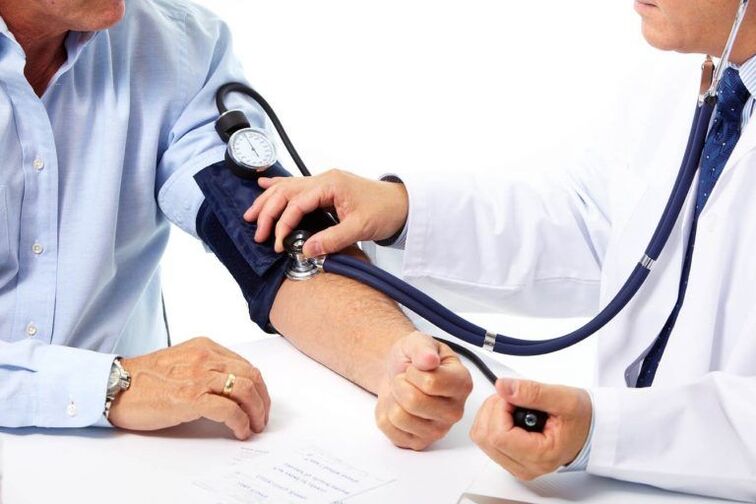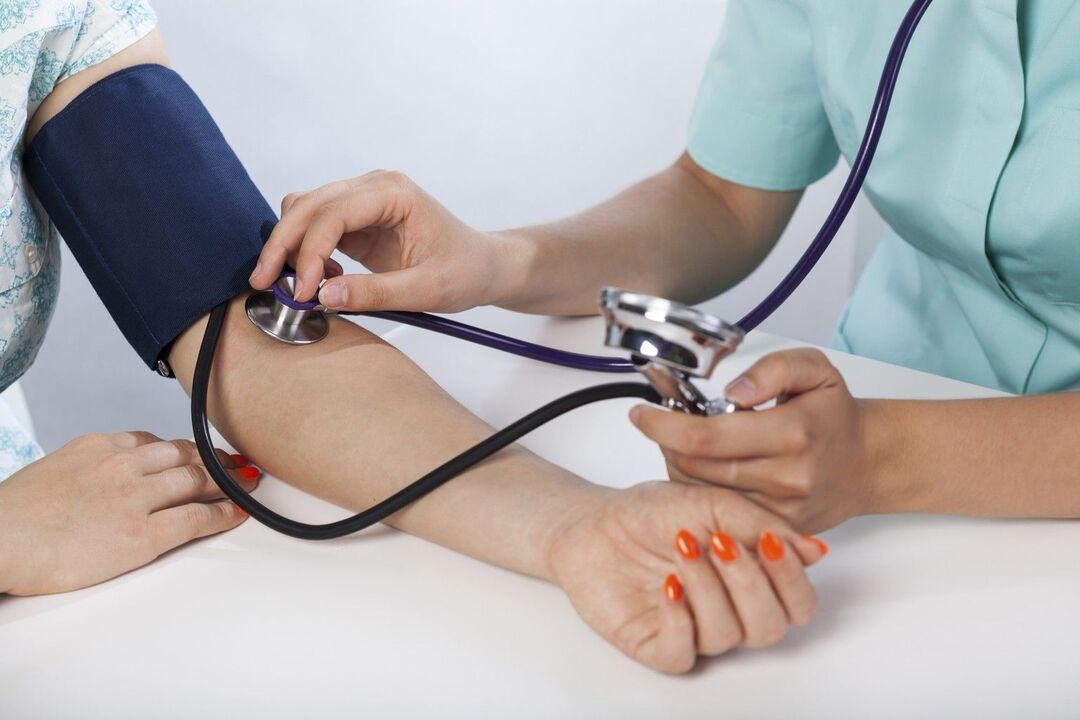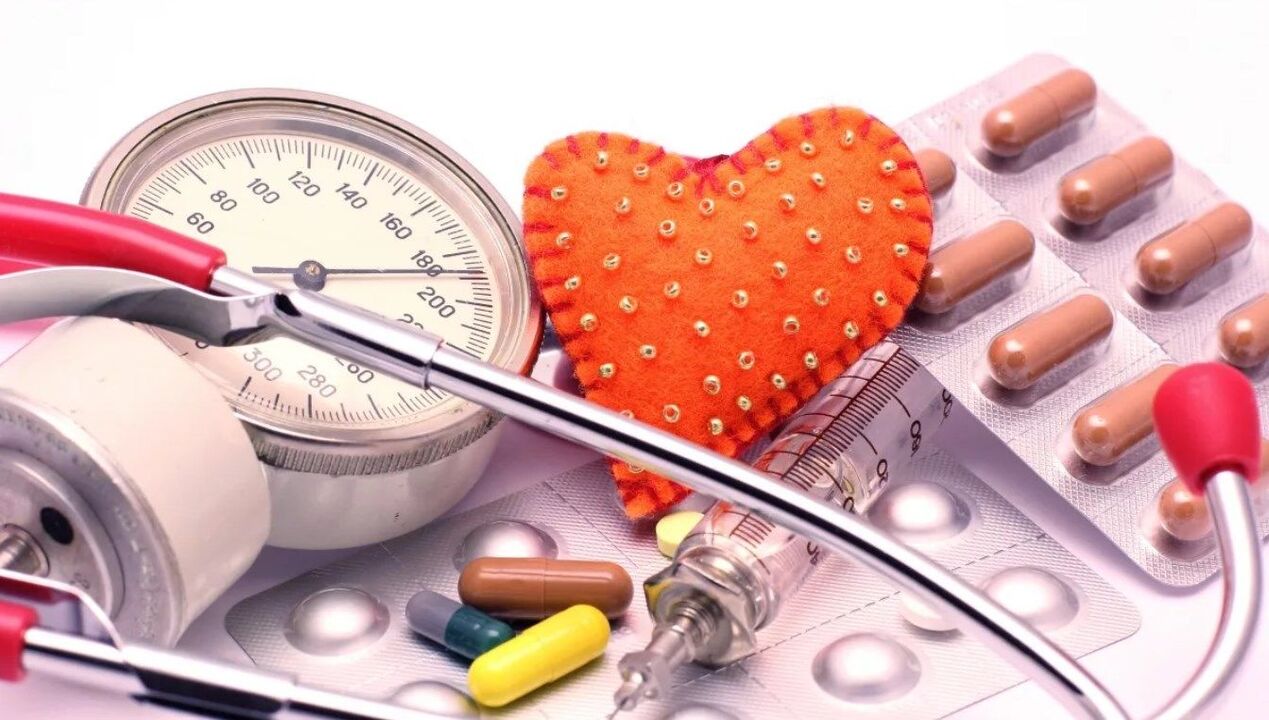
Hypertension is the most common disease of the circulatory system around the world. About 30% of the world's population suffer from this disease. In recent years, there has been a significant "rejuvenation" of the disease - among patients, more and more people of young, middle age.
Hypertension is fraught with severe, disabilities with disabilities, often leading to death. At the same time, in compliance with a number of rules, the onset and development of the disease can be delayed for years. Everyone should be familiar with the risk factors for the development of hypertension, their symptoms and principles of treatment.

What is hypertension
Hypertension or arterial hypertension (synonym: essential hypertension, primary hypertension) - a chronic approach to progression, in the clinical picture of the leading symptom, prolonged increase in blood pressure (ie, arterial hypertension syndrome).
The criteria for arterial hypertension are considered to be systolic blood pressure (blood pressure) above or equal to 140 mm Hg. Art. and/or diastolic blood pressure above 90 mm Hg. Art.
Etiology of the disease
Hypertension is considered to be an idiopathic disease, the immediate causes of its occurrence have not been established.
Among the numerous theories about the emergence and development of primary hypertension, classical neurogenic theory is the broadest widespread. This concept views hypertension as a neurotic state of higher nervous activity. The starting mechanism is considered to be nervous surge (acute or prolonged, chronic), which causes a disturbance of the trophism of the brain structures that are responsible for regulating blood pressure. Of particular importance are the emotions that have not received application in the motor sphere, the so -called "unreasonable emotions".
When primary hypertension occurs, a genetic predisposition is monitored. 35-50% of people suffering from hypertension have a family nature of the disease. No specific gene was found, the defect of which would lead to a permanent increase in blood pressure. The disease is probably a polygenic type of inheritance.
Pathogenesis of hypertension
The pathogenesis of primary hypertension is complex and at different stages it has its own characteristics. According to neurogenic theory, under the influence of nervous surge, the inhibitory effect of the cortex of the large hemispheres of the brain on subcortical (hypothalamic) vegetative centers is reduced, which causes the sympathetic system of the press (vasoconstrictor). There is an adrenaline emission, an increase in heart discharge, the arteries are narrowed (including kidney), an increase in blood pressure. Renal arteries spasm activates another powerful urgent-angio-angiotensin-aldosterone system, which makes a significant contribution to an increase in blood pressure. Other vasoconstrictive agents are also associated with time - antidiuretic hormone, prostacilla, endothelium, thromboxane. They are against depressor systems-vascular prostaglandins, kalicrein-kinin and a system of sodium reit. A long arterial spasm leads to impaired function of their inner sheath (endothelium), restructures the walls of blood vessels and contributes to the development of atherosclerosis.
Risk factors
Risk factors are attributed to signs, the presence of which in humans increases the likelihood of developing the disease. The variety of risk factors for primary hypertension are divided into two groups - modified and unmodified.
Unmodified risk factors (it is impossible to influence them))
These include:
- The male is among the men of young, average frequency of hypertension, higher than among women of the same age. The low frequency in women is explained by the protective effect of estrogen. The spread of hypertension to representatives of both sexes, older than 60 years, is approximately the same;
- age (more than 50-60 years)-the spread of hypertension increases sharply in the elderly;
- Heredity - the presence of cases of basic hypertension in the family increases the risk of the disease.
Modified risk factors (subject to influence)
These include:
- Smoking - nicotine has a powerful vasoconstrictor. Active and passive smoking lead to spasms of blood vessels, high blood pressure;
- Obesity - that is, body weight index is over 30 kg/m2. Clinical studies have shown that the incidence of hypertension increases with the increase in human weight. The deposition of subcutaneous fat in the waist area (obesity of the abdomen) is particularly dangerous as it is associated with an extremely high risk of primary hypertension. This is due to the stimulation of the sympathetic adrenal system in fat. Waist waist over 80 cm for women and over 94 cm for men is a serious risk factor for hypertension;
- Sedentary lifestyle (hypodinamia) - insufficient physical activity provokes the development of obesity;
- Unnecessary to obtain dining salt with food (over 5 g per day);
- excessive drinking (over 30 g of ethyl alcohol per day);
- An unbalanced diet (high -calorie, with excess saturated fat) - provokes obesity;
- stressful situations.
Classification of arterial hypertension
Primary hypertension is classified according to the level of arterial hypertension, according to the nature of the lesion of the target organs.
Classification of Arterial Hypertension Levels (AG)
Category of systolic blood pressure, mm Hg. Art. Diastolic blood pressure, mm Hg. Art.
- Arterial hypertension I degrees 140-159 90-99
- Arterial Hypertension of Grade II 160-179 100-109
- Arterial Hypertension of III Grade ≥180 ≥110
Classification of the nature of the destruction of the target organs
The mouse organs are called those organs in which pathological changes occur mainly because of hypertension. For primary hypertension, the goals are heart, kidneys, brain, mesh sheath, blood vessels.
3 stages of primary hypertension
It is customary to distinguish 3 stages of primary hypertension:
Stage I.-Controlling by the lack of changes by the target bodies;
Stage II-No changes in the target organs that do not manifest from any symptoms:
- heart: increase in the left ventricle (according to ECG results or ultrasound of the heart);
- Vessels:signs of wall thickening, the presence of plaques (according to the results of ultrasound, angiography);
- Kidney:Function reduction, microalbuminuria (detection of small parts of protein in the urine);
- Retina: narrowing, impregnation of blood vessels;
Stage III-Me has symptoms of changes from the target organs:
- heart: ischemic disease, heart failure;
- brain: transitional disorder of brain blood flow, stroke;
- Kidney:renal damage;
- Vessels: peripheral blood vessel occlusion that slows the aorta aneurysm;
- Retter of the eye:Edema, bleeding, exudates.

Symptoms of hypertension
In some cases, the only symptom of basic hypertension is an increase in blood pressure for a long time. It can be accompanied by non -specific complaints of head pain (occurs in the morning, the type of "strong head", with localization in the back area), irritability, excessive fatigue, sleep disorders, general weakness, dizziness and rapid heartbeat.
Hypertonic crises are considered a vivid sign of the curing of the disease (from 1-2 hours to 2-3 days) of the exacerbation of the disease, manifested by a sudden increase in blood pressure. They are found in about one third of the patients.
There are 2 types of hypertension crises: first row (adrenal) and second row (norepinephrine).
The hypertension crisis from the first order is developing more frequently in people with medium -year years. Increasing blood pressure occurs at night, accompanied by headache, chills, limb cooling, anxiety, anxiety, rapid heart rate.
The hypertensive crisis in a second order is characteristic of the elderly. The increase in blood pressure is accompanied by pronounced headache, impaired visual perception, inhibition, drowsiness, nausea, vomiting.
With a prolonged experience of hypertension in the clinical picture, the leading place is occupied by the symptoms of diseases of the target organs: rag spilled with Pectors Poctors, thanks to a state, swelling with heart failure, symptoms of stroke, etc.
Diagnosis of hypertension
In order to diagnose a person's hypertension, it is necessary to identify a constant increase in blood pressure and to exclude the presence of other diseases that are characterized by arterial hypertension syndrome.
Increasing blood pressure is determined by a conventional tonometer - AD is measured by a doctor or patient. It is an irreplaceable condition to comply with the methodology for measuring blood pressure-measurement is performed after 3-5 minutes of rest in a comfortable environment, sitting, at rest, shoulder and heart should be located at the same level. Blood pressure levels above or equal 140/90 mm Hg. Art. He talks about suspicion of significant hypertension. In diagnostically complex cases, the methodology of daily monitoring of blood pressure is used.
Diseases accompanying high blood pressure
In Addition to Hypertension, There Are Still A Number of Diseases Accompanied by An Increase in Blood Pressure: Kidney Pathology (Chronic Pyelo-/Glomerulonephritis)Renal Arttery), Adrenal Tumor-Pheochromocytoma, Aortic Coarctation (Congenital Defect of the Vessel), Endocrine Disorders (Conn Syndrome, Syndrome, Disease. To exclude the presence of these pathologies.
The additional study is aimed at detecting pathologies of the target organs. It allows you to clarify the stage of hypertension, to prescribe appropriate treatment.
Diagnostic measures include:
- ECG: There may be signs of an increase in the left ventricle (hypertrophy), ischemic changes, signs of acute myocardial infarction.
- X -ray of the thoracic organs: changes in the contour of the heart (a manifestation of hypertrophy of the left ventricle) can be found;
- Echocardiography (ultrasound of the heart): can be detected by hypertrophy of the left ventricle, enlargement of the heart cavities, reducing its work;
- Study of the Fundus: the narrow arteries of the retina, varicose veins in the short stages - hemorrhages, exudates, swelling are determined;
- Blood test: the amount of cholesterol, kidney indicators (creatinine, urea) are determined;
- Urine analysis: Disorders of kidney function, microalbuminuria and more are detected.

Hypertension
In the treatment of primary hypertension, no -DRUG and drug methods are used, which are complemented by each other.
Methods of NO -Another for the treatment of arterial hypertension
They are prescribed to absolutely all patients with hypertension, even if a person receives blood pressure control medications. These measures imply the elimination of risk factors by changing the established lifestyle and human habits. Scientists have proven that treatment that is not a disorder, in some cases, is not more than medication.
The basic instructions:
- Restricting the amount of salt at the meal coming from food (up to 5-6 g per day). This implies complete rejection of foods such as sausages, sausages, salty cheeses, canned foods, salty fish. It should also be taken into account that a significant amount of salt is contained in bread products;
- Fighting overweight - people suffering from primary hypertension, it is recommended to reduce the calorie content of the diet by limiting the use of fat;
- limiting the use of alcoholic beverages - to 30 g of ethyl alcohol per day;
- Complete and strict quitting smoking-if necessary, resort to the help of a drugstick;
- Regular physical activity is moderate, preferably every day, lasting for at least half an hour. They prefer events in fresh air: jogging, walking with accelerated pace, cycling.

Treatment of arterial hypertension drug
It implies the use of medicines.
For the effective treatment of primary hypertension, several classes of drugs are recommended by experts, they reduce blood pressure affecting different stages of pathogenesis of the disease.
Main Classes Medicines:
- Angiotensin -producing enzyme inhibitors - IAC;
- Angiotensin receptors - sartani;
- calcium antagonists;
- diuretics;
- blockers;
- Renin inhibitors;
- central (brain) drugs;
- Alpha-blockers.
Combinations of medicines to treat arterial hypertension
In the treatment of hypertension, the combinations of drugs from different groups are used, for example, for example, IACD + diuretic, calcium antagonist + IACF, -Block + Sartan + diuretic. The modern pharmaceutical industry produces a large number of ready -made combination drugs, which greatly simplifies medicines.
It should be noted that the treatment of hypertension is performed under the continuous control of a doctor therapist or cardiologist. The doctor determines the volume of medical measures, the moment of prescribing medicines, dose, etc.
The independent prescription of antihypertensive drugs is unacceptable. With the development of malignant hypertension, which is not subject to the effects of drugs, surgical treatment of hypertension (stimulation of baroreceptors of carotide sinus, kidney denervation, etc. ) can be performed.
Hypertension
The primary prevention of hypertension should be done from childhood. Children, adolescents, young people should regularly undergo medical examinations with blood pressure measurement. Prevention should affect the risk factors of the disease. Children are shown rational muscle load, nutrition, excessive consumption of salty foods is unacceptable. Secondary prevention is aimed at preventing the progression of the disease. People suffering from hypertension are contraindicated at night, overtime, as well as conjugated with nervous overloads.

















